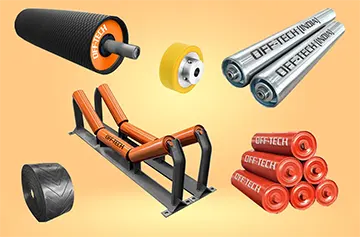The key elements of a belt conveyor system include:
1.Conveyor Belt : This constitutes the mobile part of the conveyor
mechanism, responsible for conveying materials from one point to another. Typically crafted from
materials like rubber or PVC, these belts are engineered to handle diverse loads effectively.
2. Idlers : Idlers consist of cylindrical or spherical rollers
mounted on the conveyor frame. Their primary role is to provide support and guidance to the conveyor
belt, ensuring proper tension and alignment.
3. Pulleys : Pulleys are instrumental in driving the conveyor
belt. The drive pulley connects to the motor or drive unit, supplying motion to the belt. Meanwhile,
idler pulleys offer support and maintain tension.
4. Motor : Belt conveyors can be powered by various motor types,
including electric, hydraulic, or pneumatic motors. Electric motors are the most common choice. Conveyor
speed is regulated by adjusting the motor or drive unit's speed, either manually or automatically
through a control system.
5. Drive Unit : Responsible for transmitting power from the motor
to the conveyor belt, the drive unit enables material movement.
6. Control System : The control system governs the conveyor's
operation, encompassing start, stop, and speed control.
